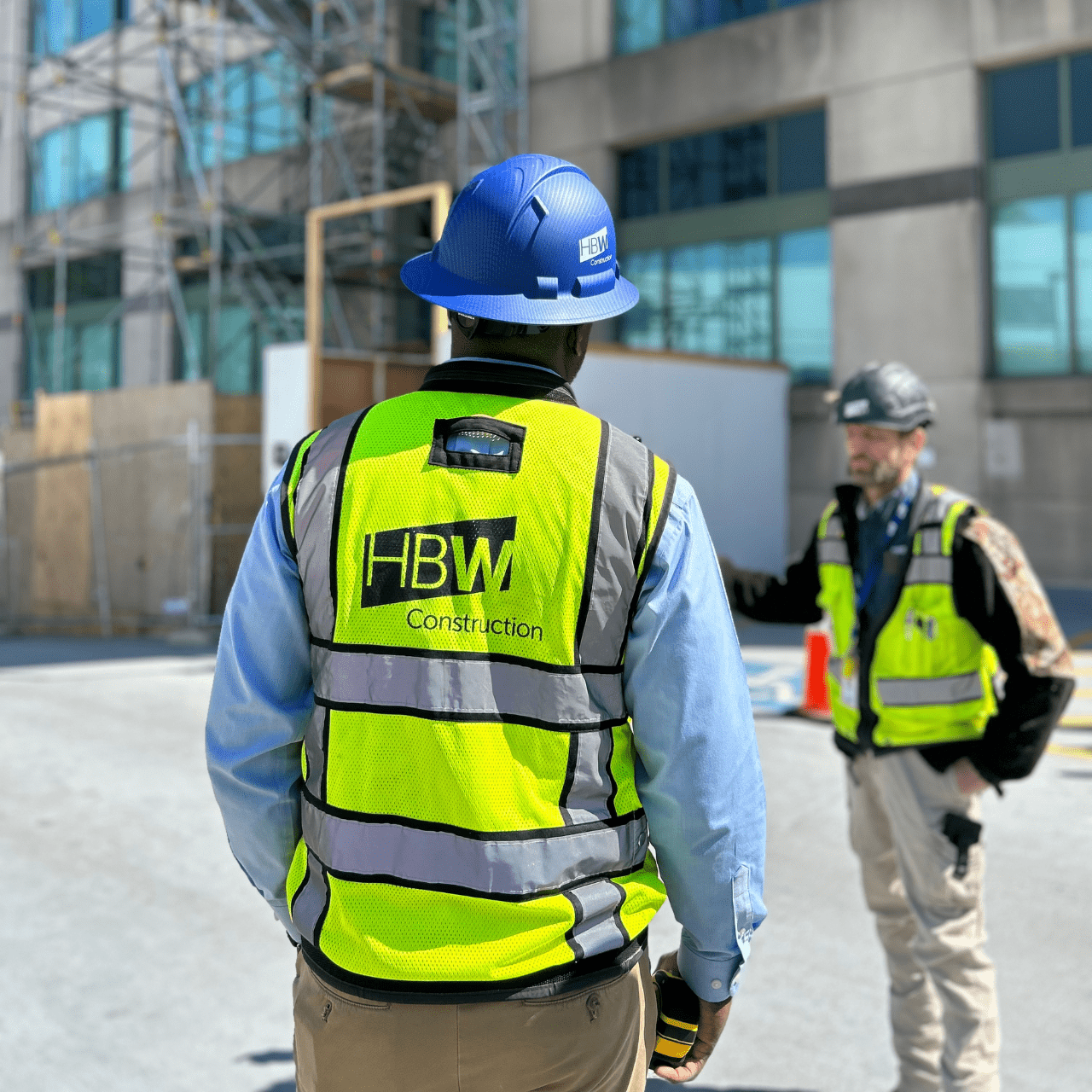A discussion during the pre-construction process can help your project team determine owner preferences beyond certification standards or jurisdiction requirements. HBW trains our field team to prioritize recycling, upcycling or materials re-use. Our creative solutions in the field result in stronger client relationships. Besides the environmental benefits, recycling and repurposing can reduce project expenses and keep the construction project schedule on track.
Careful use of job site materials reduces waste and landfill fees. It can also sometimes result in creative design or engineering solutions for the project. We keep these factors in mind prior to demolition and during construction.
Job Site Recycling Ideas
Based on energy-efficiency standards in many major cities, some materials within existing buildings need to be replaced and disposed of properly, such as fluorescent light bulbs. However, the old metal lighting ballasts can usually be recycled. You can separate this type of metal and other metals from general construction debris for recycling.
The same can be considered for wood millwork and certain types of glass or stone. There are companies that will take some construction debris to recycle or develop new composite products, which diverts tons of material from the landfill. These options can also reduce a project’s waste disposal costs.
Job Site Repurposing Examples
During remodeling projects, there are often opportunities to repurpose or re-use materials. Each project and jurisdiction is unique, but we have often found ways to repurpose materials that range from millwork and doors to carpeting, glass panels and ceiling tiles.
When appropriate to the architectural design, engineering specs and building codes, repurposing or upcycling can save clients a lot of money on materials costs. When materials are discontinued or supply chains are uncertain, the benefits multiply!
- On a recent job, our approved repurposing of several glass doors saved the client thousands of dollars and kept the project on schedule for inspections.
- On another job, we used a set of existing lower cabinets from a remodeled space to refashion supply closet millwork. This particular millwork was discontinued; rather than tearing it out and replacing it, we suggested this successful alternative to repurpose on-site materials.
- We have obtained client approval to preserve materials from remodeling projects such as quality doors, ceiling tiles or light fixtures. Stored in our warehouse, these materials are “in stock,” for temporary or permanent solutions on other projects, which help maintain the construction project schedule.
[rl_gallery id="7639"]
The question we always ask is, “Can we use this in some other way?” For example, residential or office buildings may have mechanical components that are still up to code and are difficult to find or costly to replace. We can preserve these components for an owner or tenant management company to support future building repairs. Training our team to think about current and future needs of the client can reduce project waste.
Rather than tossing it in the dumpster, we have also found new homes for items such as lightly used office furniture, fixtures and computer monitors. HBW field personnel stay in touch with each other across projects to brainstorm ways to repurpose or donate items.
When the construction team can use their creativity and ingenuity to work in partnership with the architectural and engineering team, it benefits the client and the environment. It also makes the team feel good about how they contribute to a successful project beyond the building process.
Recycling and re-use aren’t always possible, but you don’t know unless you try. When in doubt, don’t just toss it out. Discuss options with the client and project team early and often.
Learn more about HBW’s quality control and safety practices.

